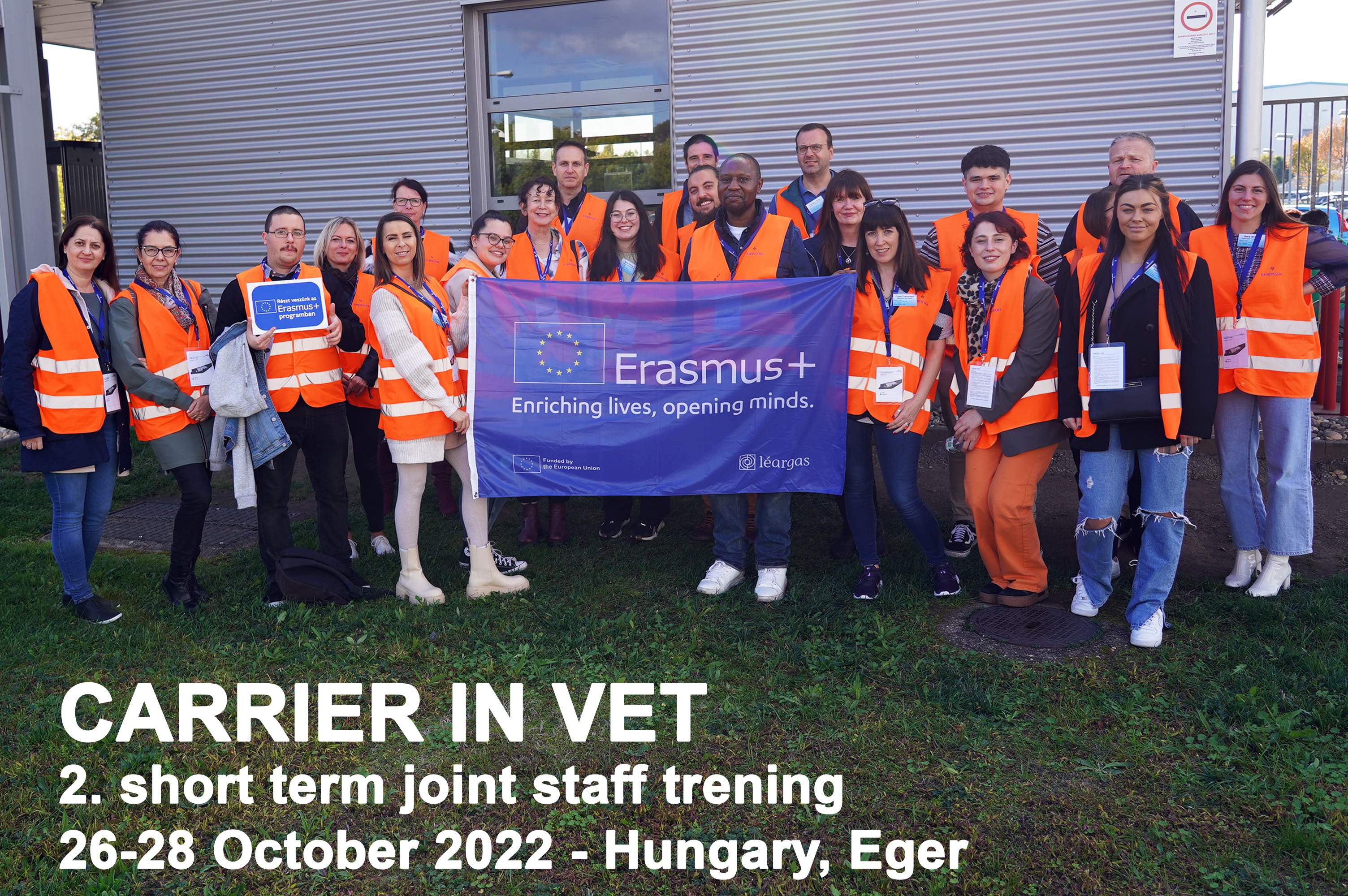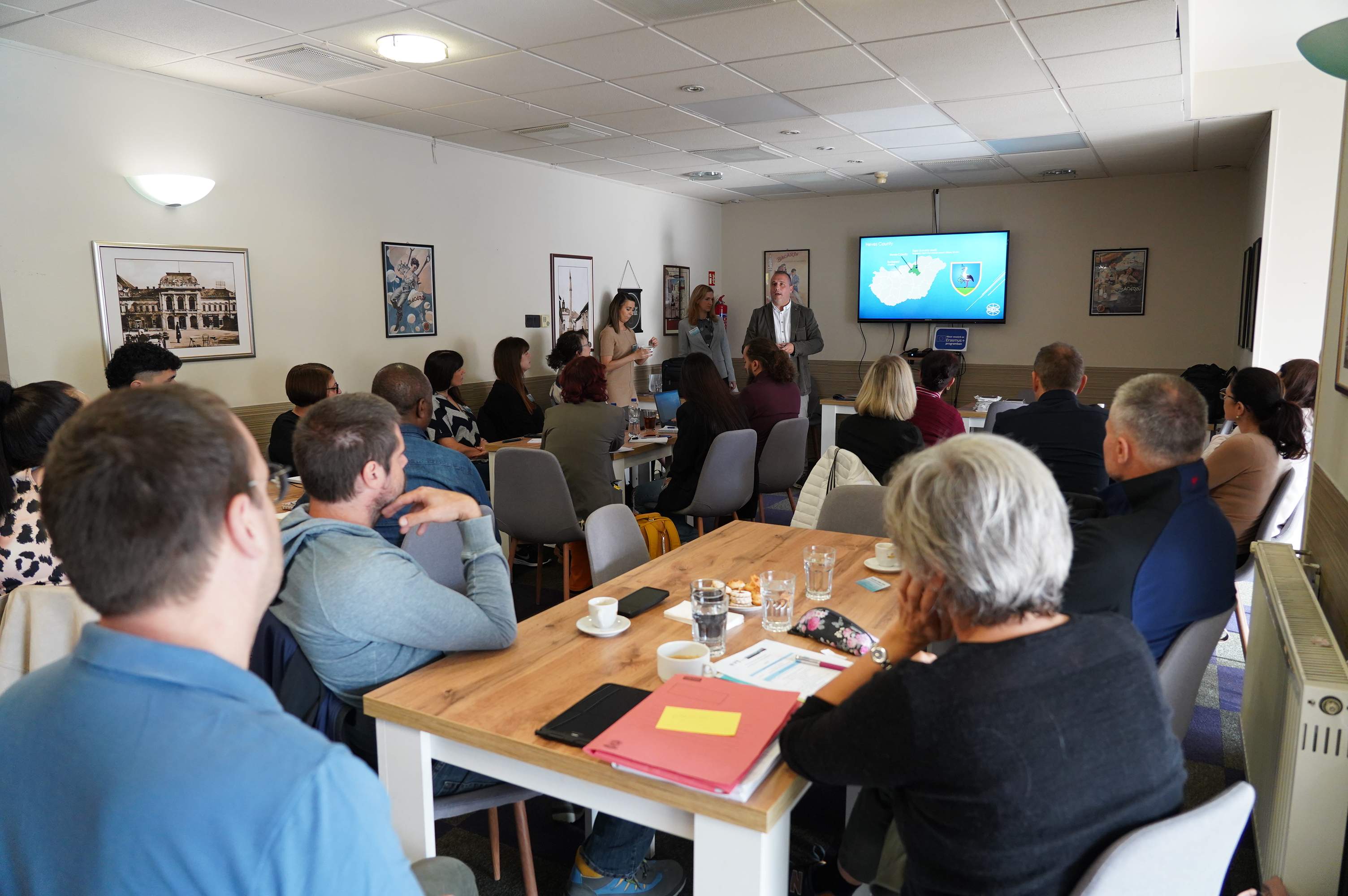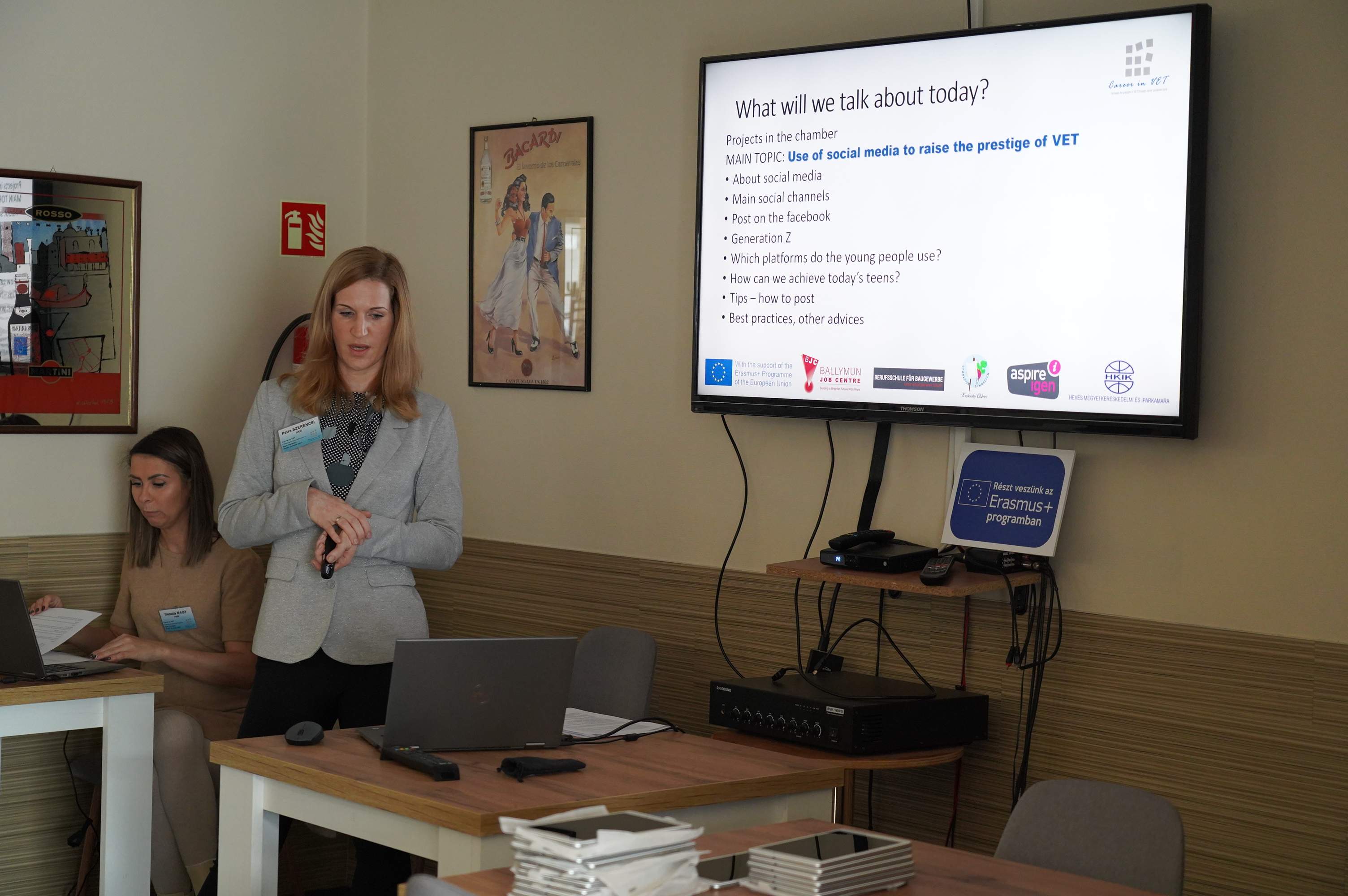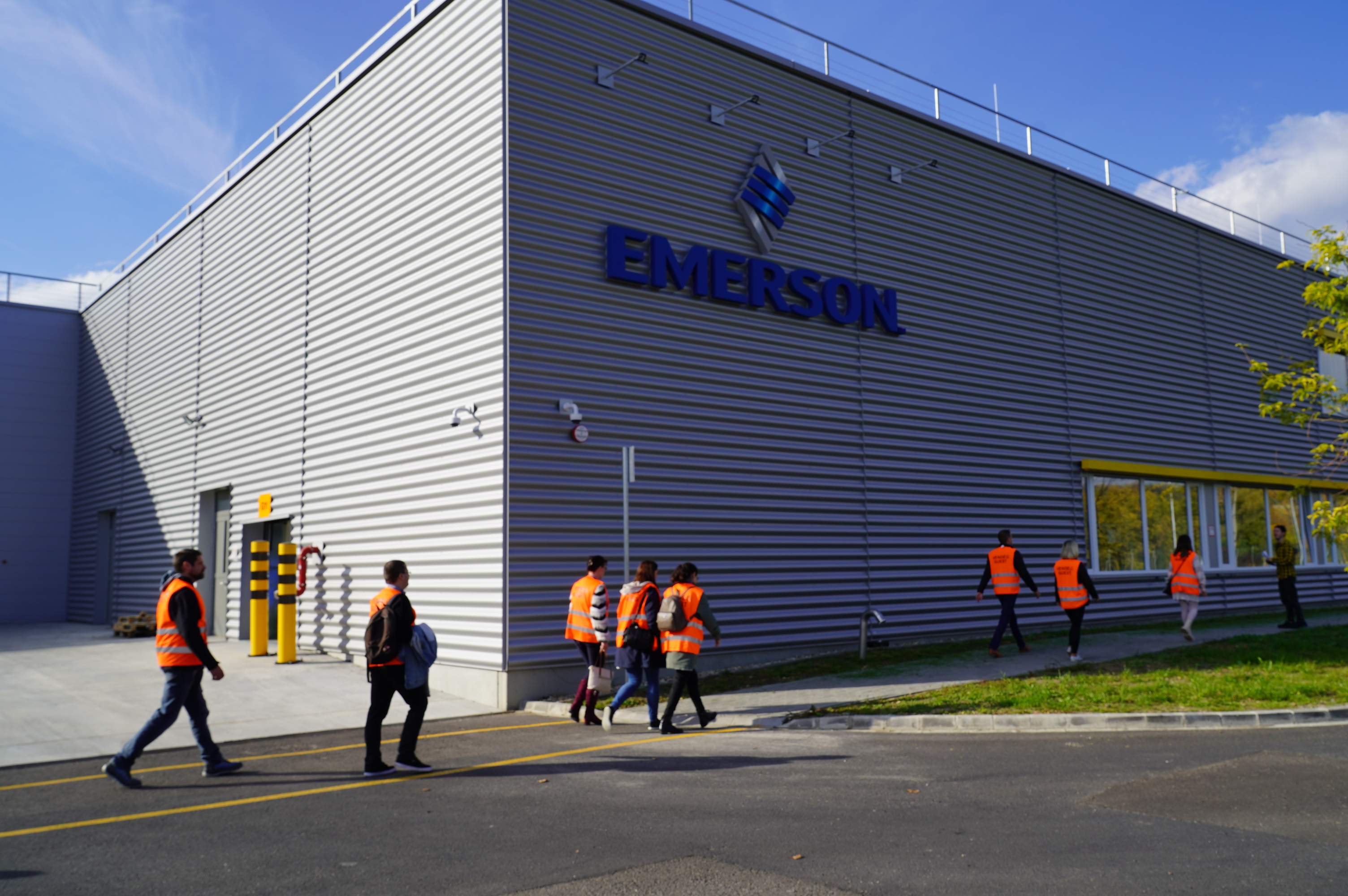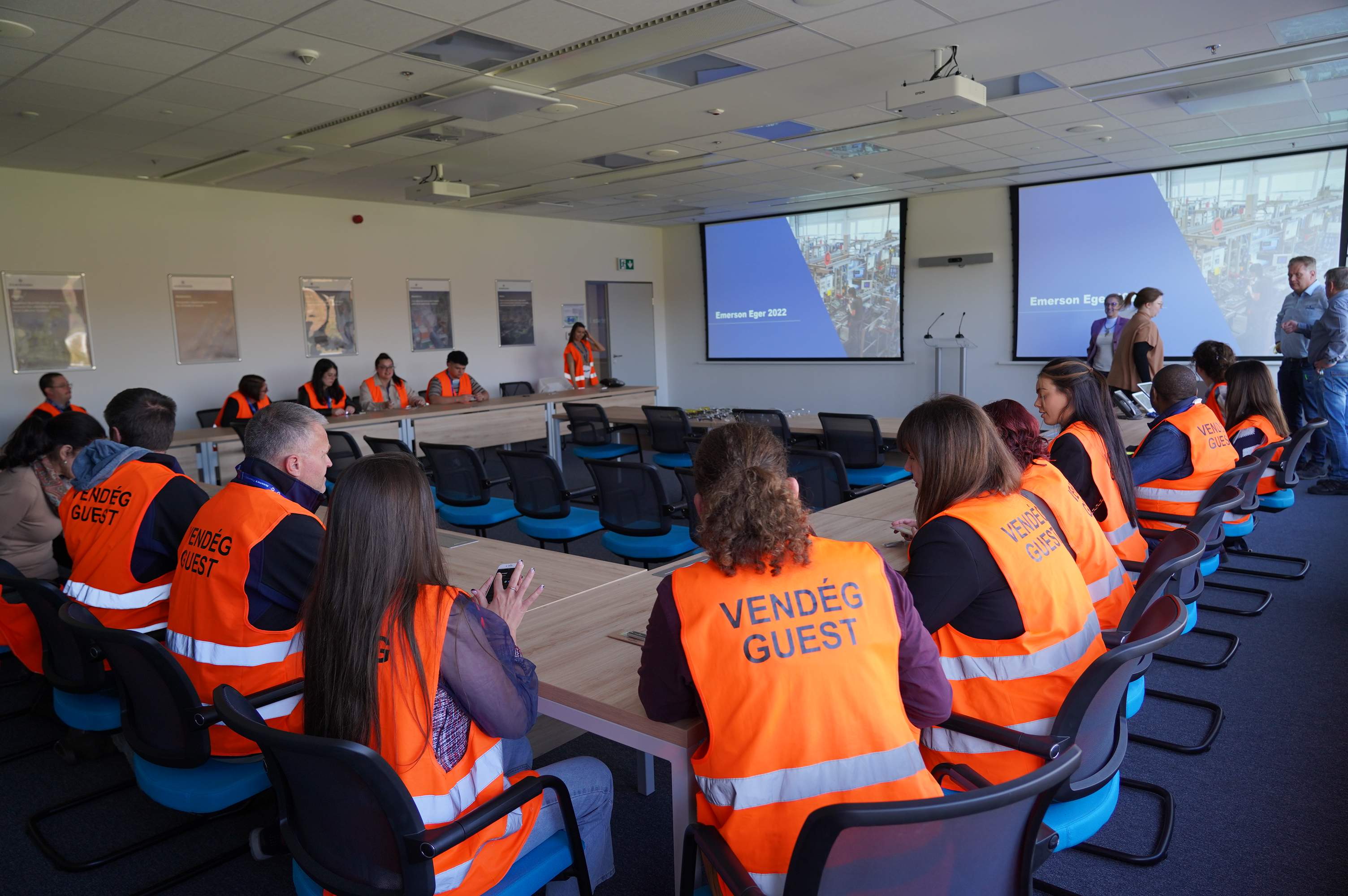The topic of the 3-day training held in Eger, Hungary was the use of social media to raise the prestige of VET. The main goal of the training was to demonstrate what social media interfaces exist, which ones we use, which our target groups use, and through which platforms we can communicate most effectively. We talked about content sharing, its advantages and disadvantages. We tried to structure the training in such a way that it would give all our partners new ideas and tips, be a little playful and everyone could express their own opinion on behalf of their organization.
Summary
After welcoming the partners, the opening speech was given by Sándor Pál File, Secretary General of Heves County Chamber of Commerce and Industry, who gave a comprehensive and detailed presentation on the topic of the economic situation of Heves county.
After the thorough introduction and discussing the agenda Renáta Nagy, VET advisor of HKIK gave a quick repetition about the main role and tasks of the chamber and how it is related to
vocational education and training. Shortly after, she gave a presentation
about the use of social media at HKIK, about what social media platforms they
use, what kind of contents they post, who they want to target with the contents
they share, who are their target audiences on the various social media channels.
She presented the main initiatives recently created by the chamber on social media platforms, the aim of which was to reach and attract the attention of as many students as possible.
Afterwards, Petra Szerencsi, the chamber's project coordinator spoke about the chamber's main ongoing projects, first highlighting the LIFE-IP North-HU-Trans project, which aims to help the country's largest power plant transition to decarbonization, as well as to support local businesses that are suppliers of the Mátra Power Plant with mentoring programs, various trainings and retrainings. Furthermore, she covered the chamber's partnership participation in two projects, the aim of which is promotion and monitoring of environmental sustainability in vocational training and raising awareness on effective waste management.
After the project presentations, she talked about
social media use in general, what social media actually is, what it is about,
what its purpose is, what platforms are present in our lives. With the help of
a diagram from this year, she illustrated the
distribution of the communication channels most often used by the 16-64 age
group who use the Internet. She also talked about what the different social
media channels are for, what they can be used for, what their goals are, who
are the main users, who are the target groups, what content can be shared and
posted. A comparison of these fairly well reflected the differences and
similarities between the platforms quite well. We were able to learn a lot
about content creation, what a good content is, what to pay attention to when
sharing contents. We were able to get to know useful sites for making posts, a great
content creator has been introduced. The differences between different
generations were precisely outlined in digital and technological development,
communication, keeping in touch, interests and many other topics related to
social media. We got a lot of new and even more useful information about
Generation Z, such as why they use different social media platforms than their
parents, or when and for what they use each platform, or what kind of contents they
post and share the most. She provided us with personal advice and suggestions,
as well as useful tips on how we adults can reach and involve young people or
students. At the end of her presentation, she showed us a very good and
illustrative video on the topic of TikTok for Businesses: Who,
What, and Why for Marketers. After that, we played a little Kahoot! as a
diversion where of course there were questions about social media and
vocational education and training. After a hearty lunch, the group took part in a
guided factory visit at the EMERSON company, where after a short company presentation,
we were divided into two groups and could see the company's production
activities. We ended the day with a delicious dinner in one of
Eger's most visited restaurants, the HBH restaurant, which was preceded by a
short but all the more interesting guided city tour.
Following the first day, the next training session was held by Gergely Tóth, who headed the Business Management Department of Szent István University for five years, started his speech with his background in Erasmus+ programme, marketing, teaching and management. He told about his experience in building a 4 student strong university sub-faculty into a 120 student independently accredited institution for exchange students.
The main topics he also covered: Establishing the niche and building towards an audience, establishing an edge: institution and company partnerships, interaction control - School staff alignment on common values and communication, how to build rapport with students, integrating innovation into methodology, how all of the above worked together: impact analysis and lessons learned.
After lunch the topic of the second segment was reaching potential students. This was based on an analysis of current successful media campaign. He presented various examples. Here he touched on the current challenges and talked about the importance of sensing and interacting with the environment. He made a difference between work vs. professions. In order to effectively reach potential students, he placed a lot of emphasis on the type of person you are looking for, what do you offer, how to create attention, how to keep attention, how to be memorable. He gave his own ideas and tips on how to set up a social media campaign from scratch. The speaker avoided the presentation style, mostly shared his own independent experiences with the team, tried to involve the audience in the conversation, but also tried not to tell or repeat the structure and topic of the next day's workshop.
The final training day began with a short overview of the remaining tasks of the project and we discussed the next steps regarding the project. We set the date and venue for the remaining 2 TPMs.
We continued with a workshop, the purpose of which was to provide a place for us for common thinking, to share our thoughts on the topic „Social media in vocational education and training”, and to listen and learn from each other. With the help of a lottery application, we formed 4 groups at random. Each team was given a topic that they had to discuss and then present to the others. The 4 topics were as follows: content, channels, generations, youth. Time for discussing and preparation was 30 minutes and each team had 10 minutes to present each presentation. The workshop was very well structured, there was an opportunity to ask questions about the other group's presentation, we were able to make comments to each other, and we were able to share our own independent opinions on the other 3 topics as well.
In short, the teamwork was very useful, because in addition to the fact that we learned a lot from each other, we were able to experience the key issues related to the use of different social media platforms from a different point of view and from a different perspective.
